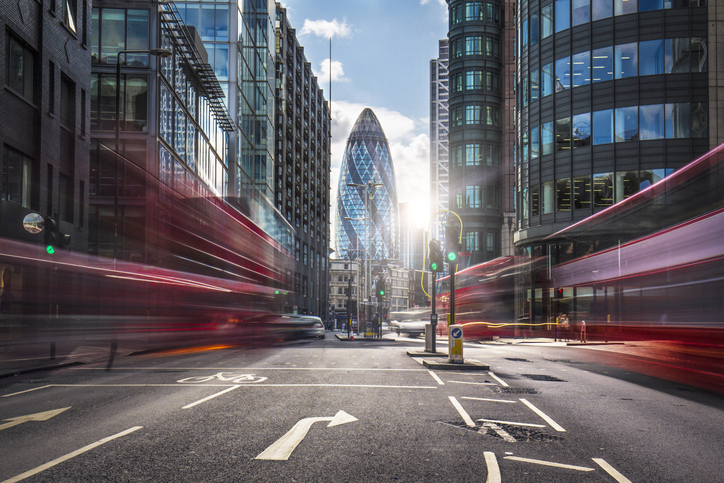In 2011, Uber was just one in many Bay Area start-ups, armed with a great idea and unfettered ambition. In seven short years, the company is currently valued at $69 billion, operating in more than 527 cities in 77 countries.
Among its many milestones is the fact that the start-up’s model has created a new way of working, transacting and commodifying services. We examine the transport app’s best and worst moments.
Uber milestones: the good, the bad, the ugly
2009–2010
Uber launches and focuses growing in the San Francisco Bay Area
2011
Uber expands within the United States.
2012–2013
Uber expands internationally.
2014
Uber continues its international expansion and starts offering logistic services like courier package delivery. It changes its tagline from “Everyone’s private driver” to the much broader “Where lifestyle meets logistics”.
Uber issues an apology after documents were leaked to the media saying that Uber employees in New York City deliberately ordered and cancelled rides from new competitor, Gett to sabotage these rival companies. Uber is also called out for trying to entice rival drivers with cash to quit their companies and join Uber.
Later in the same year, Uber is accused of doing the same with another competitor, Lyft.
November 2014
At a private dinner, a senior VP suggested that Uber hire a team of opposition researchers with a million-dollar budget to dig into the personal lives and backgrounds of journalists who reported negatively about Uber. Although the person in question later clarifies and apologises for his comments, this receives a lot of negative publicity, with thousands of journalists deleting the app from their phones in retaliation.
Late 2014, 2015
As Uber’s global recognition grows, but the company starts to face increasing pressure from regulators in the United States and in India.
February 2015
Uber admits that it had suffered a data breach more than nine months before, where around 50,000 driver names and license plate information were disclosed. The company faces backlash for waiting more than five months to notify people who were affected by the leak.
2015
Uber announces a major investment in self-driving cars.
Uber’s key focus is to attain market dominance in India against local major player Ola Cabs, in China against Didi Chuxing, and South-East Asia against GrabTaxi. In response, the dominant players raise huge sums of money to keep Uber in check and announce strategic partnerships, including one between Ola Cabs, Didi Chuxing, GrabTaxi, and Lyft, Uber’s American rival.
Protests against Uber flare up in Germany, India, Spain, Colombia, France, Italy, Denmark, Canada, China and England, following concerns over Uber’s aggressive operating style that could stamp out local industries. Protesters also allege that Uber does not pay taxes or licensing fees and that drivers are untrained, unlicensed and uninsured. Issues over passenger safety arise following incidents of violence and rape because of Uber’s allegedly lax background checks.
Uber launches its UberMilitary Families Coalition, a project to support its existing UberMilitary initiative to hire more military dependents, in addition to veterans, as drivers.
Uber updates its app to include accommodations for drivers who are deaf or hard of hearing.
The term ‘uberisation’ is coined after the disruptive, consumer-first, app-based business model being replicated and adapted in other sectors. Netflix for visual entertainment, AirBnB for tourism and hospitality, Tesla for automotive technology and Uber for transport. The financial value of those four tech giants reaches $57 billion.
Uber is served with lawsuits from its drivers who believe they are essentially employees with the benefits that come with the label.
September 2016
Uber announces interest in urban transportation with flying vehicles. The company partners with Airbus to test an Uber service with helicopters in São Paulo for a month.
October 2016
The Central London Employment Tribunal rules that Uber drivers are “workers” rather than self-employed contractors, and are thus entitled to minimum wage, paid holiday and other benefits.
December 2016
Uber begins using self-driving Volvo XC90 SUVs in San Francisco, but within a week, the California Department of Motor Vehicles revokes the registration of the 16 vehicles used for the test.
Uber: the definitive fact file
This handy infographic from Select Car Leasing reveals other fun facts about this multibillion-dollar global phenomenon, its drivers, competitors and funding rounds.

Investment in transportation startups accelerated in 2016, with VCs and seed investors pouring more than $6.2 billion into more than 150 transport-related businesses across the globe in Q3 alone. A few strong contenders stand between Uber’s hegemony over the global mobile-powered ride sharing market, serving customers in smaller cities, or travelling long distances.
Anything but Uber: 5 start-ups redefining how get from A-to-B
Going somewhere? Traditional taxis and on-demand apps don’t always cut it for long journeys and small city dwellers. Luckily for you, there are so many alternatives now. New services, popping up all over the world, make getting from A to B easier than ever before. Challenging traditional methods of transportation, such as the personal car, the overpriced taxi, your weary friends and family… and disrupting the travel industry, these companies have unique solutions to the A-to-B conundrum. Here are five transportation startups, each with a distinct USP when it comes to getting you where you need to go.
GoOpti
The likes of Uber are available in big cities, but what if you live somewhere more rural? European dynamic shuttle platform GoOpti connects passengers travelling from smaller towns to large airports helping users cut down on hefty travel costs. Available via web or mobile app, GoOpti’s platform allows you to map out your route, book and pay with ease. GoOpti also partners with travel agencies and hotels to accommodate larger groups.
Cabify
Cabify has a fixed rate system which makes sure that users know what they’re paying upfront – unlike the traditional taxi fare or unpredictable surge pricing seen elsewhere. They’ve also created Cabify for Business and Events, devised to make it easier for people to book their business and formal trips well in advance. Corporate travel includes a dedicated account manager, invoicing, discounts and other great features.
BlaBlaCar
If you’ve got a spare seat in the car, why let it go to waste? BlaBlaCar is a long-distance carpooling service, connecting drivers with empty seats to people travelling the same way. More than 10 million people use BlaBlaCar every quarter, which is great for cutting costs and also helping the environment!
Zipcar
Zipcar is the world’s largest car club, which gives you access to the car or van you need when you need it, perfectly maintained but with none of the hassle of expense or ownership. Membership is as low as £6 per month, and you can also rent by the hour or day.
Gett
A similar concept to Uber but with fixed pricing and a function that allows you to book journeys in advance. The startup makes for much happier drivers too, paying them better than Uber, as well as offering commission and sign-up bonuses! Gett is currently available in 100 cities around the world and is set to expand further. In the UK, Gett partners exclusively with London’s famous black cab drivers.







